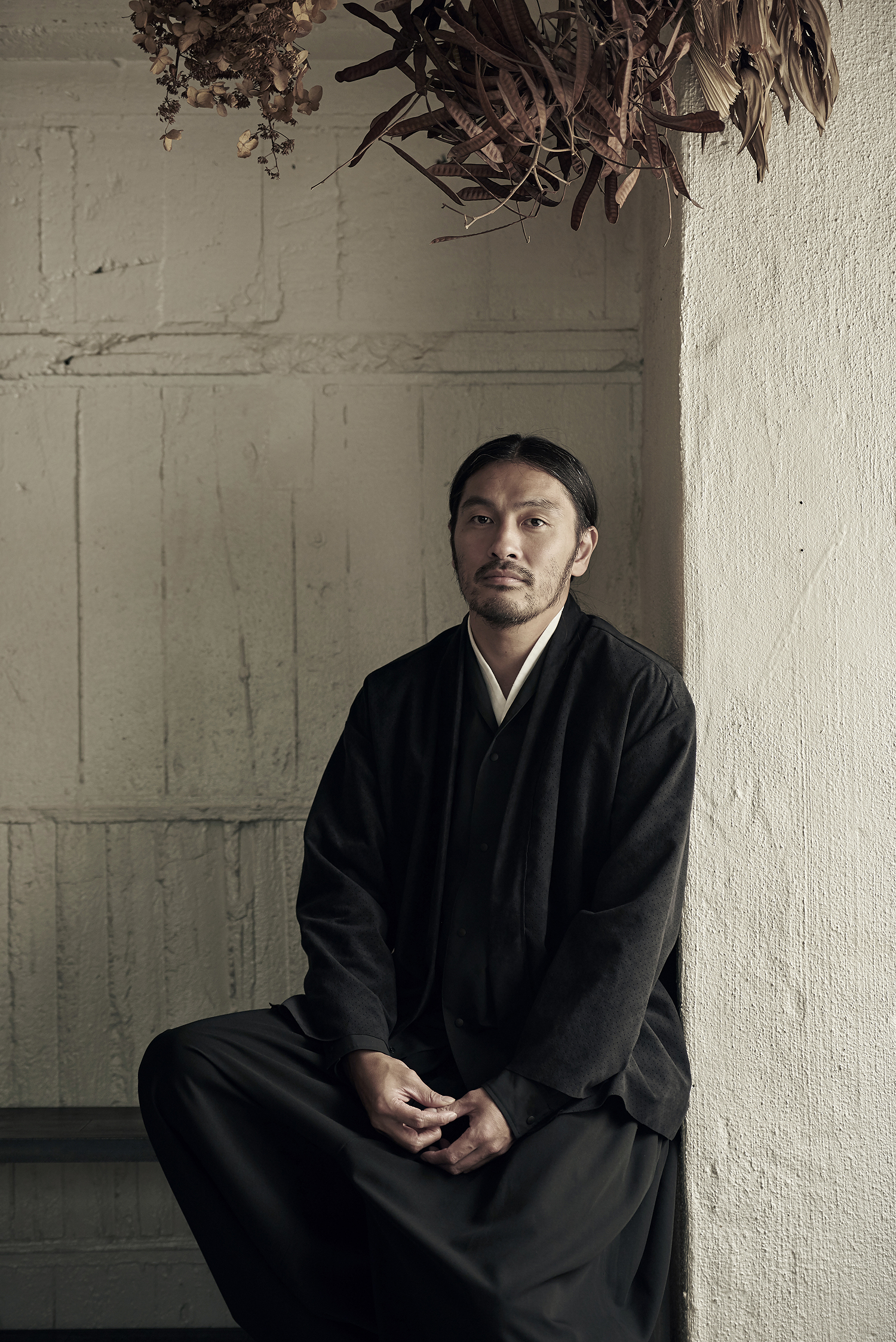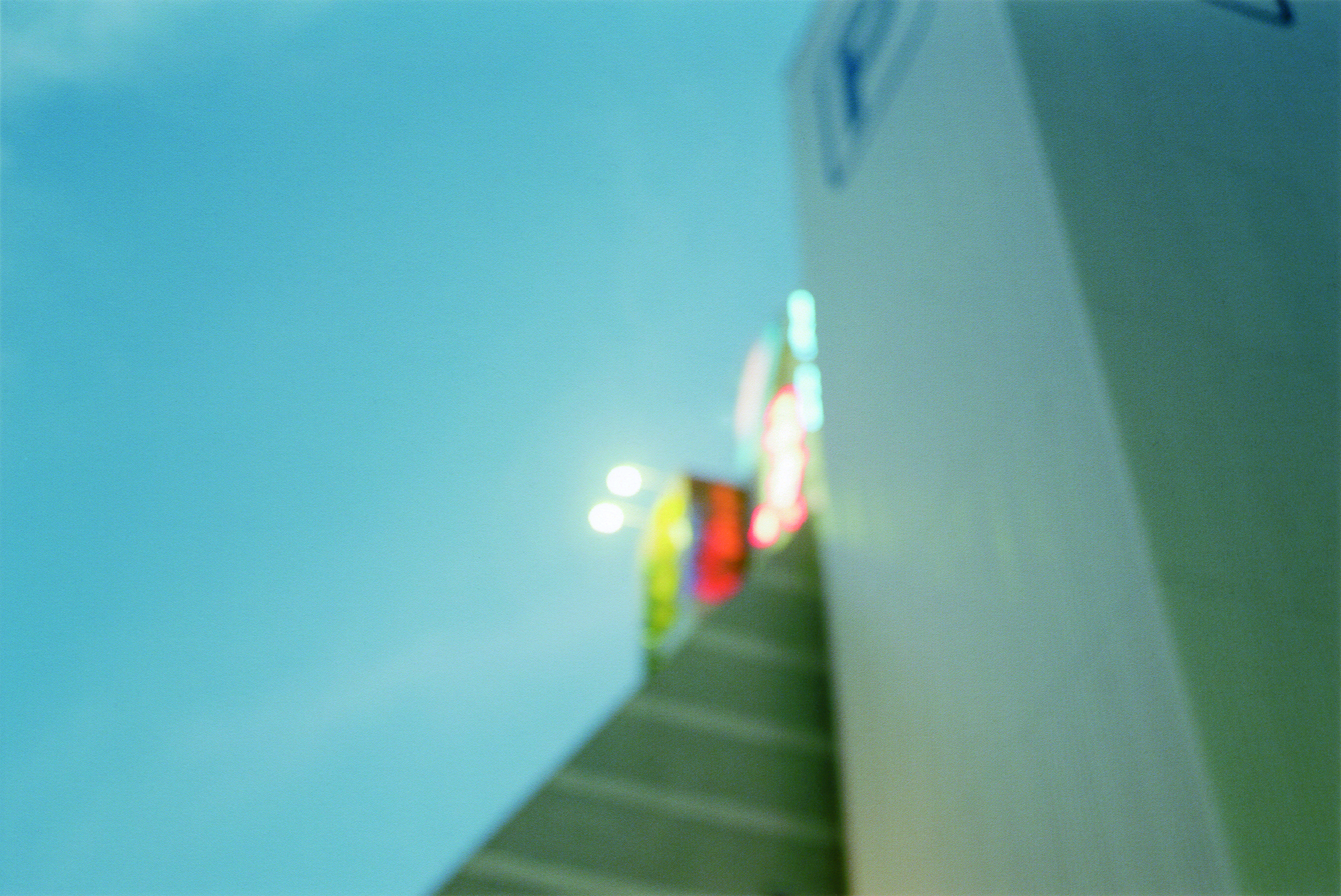INTERVIEW: DAISUKE YOKOYAMA FROM SASQUATCHFABRIX
Sasquatchfabrix. designer Daisuke Yokoyama is perhaps one of the most profound people I have come across in fashion. The brand is a unique culmination of Yokoyama’s deep consideration for Japanese heritage and his own immersion and experiences in cultural aspects from around the world.
I sat down with him in his Tokyo studio to discuss the elements that define himself and Sasquatchfabrix. – everything from his education in architecture and graphic design to the brand’s philosophy, as well as the editorials we produced for THE NEW ORDER with renowned photographers Masayuki Yoshinaga and Kyoji Takahashi.
When did you first get into clothing and fashion?
I started to become aware of what I was wearing towards the end of elementary school and during junior high school.
What were your influences at the time?
I was influenced by a lot of people and things. I can’t choose any one thing in particular, but The KLF and Beastie Boys are what comes to mind now.
Back then, were you interested in Japanese clothing?
No way [laughing]. The Japanese word for clothes, youfuku, literally translates to ‘western clothes.’ So it’s all about the US and Europe. Music, too – I was more into American music than Japanese. I think I disliked Japanese products during my teens and twenties. That’s how it was back then. Japan is an island nation, so since the olden days we’ve always been really interested in foreign things. I think the ‘80s and ‘90s was a time when we tried to hide or erase our own cultural roots as much as we could. In the ‘60s, we would emulate western culture but were still aware of Japanese culture, but in the ‘70s, that sort of awareness was weaker and westernisation went full speed. However, on the flip side, that’s when we saw the birth of Japanese subcultures like bosozoku (motorcycle gangs) and kogyaru (glam-gal fashion).
Did you always want to do something in the fashion world?
No, I had never really thought about it. In university I majored in spatial design and environmental design, but I never thought about trying fashion.
When did you move to Tokyo?
When I was about 21.
And that was after university?
I dropped out of university in my fourth year and didn’t graduate. I had a few things planned, but I wasn’t sure if I could graduate [laughing]. It felt pointless to stay in school, so I came to Tokyo.
What did you after moving to Tokyo?
I interned at an architectural office first, then I joined a graphic design company. I got the idea to start Sasquatchfabrix. a few years later, when I was 25.
I started this magazine at the same age.
Yeah, that’s how it goes, right? You work under someone for about three years and then start something on your own.
These days, you incorporate quite a lot of Japanese culture in your work. Why is that?
I’ve been doing that since March 11, 2011 – following the huge earthquake and nuclear disaster in Japan. Araki, my partner in the brand, moved to Fukuoka, so I was working in Tokyo on my own. Prior to that, with Araki, we always worked on impulse and instinct, which is both good and bad. But after he moved, I was forced to think about how best to continue the brand. When I thought about the kinds of things I wanted to design, I asked myself, ‘what is modern clothing in Japan?’ The answer was western clothing, and not traditional Japanese clothing, known as wafuku.
Do you think the way Japanese people make and wear clothes needs to change?
Clothing in Japan is based on imported designs. I wasn’t sure if there was any reason for Japanese designers to design clothes. I wanted to do something that only I could do because I am Japanese, but it didn’t make sense to go back to traditional Japanese garments. I knew that to proceed, I had to rediscover the Japanese culture lost over the past 20 to 30 years. It wasn’t about reviving traditional Japanese concepts, but more about finding something native to myself and incorporating those element into the clothes. When I began trying, I wasn’t very good at it. Japanese people, especially those who like fashion, don’t really like traditional Japanese concepts. I think a lot of people thought I was crazy when I started trying it out [laughing]. I’m not necessarily saying that all Japanese things are fashionable. I wanted to dig further into the meaning of modern clothes in Japan, and not just leave it as western clothes. It’s fairly easy to make clothes look cool and show your taste through fashion – and that is something done out of impulse and is for young people to try – but to continue a brand and survive, you’ve got to find the meaning or send out a message in your work. That was my biggest motivation.
So, when did you first incorporate this way of thinking into a collection?
Spring/Summer 2012. We drew the hinomaru (Japanese flag) on tatami mats and wrote ‘anti-nuclear’ on lanterns, and called it Japonism Sunbeam. Looking back, we were making some scary stuff [laughing].
How do you approach a new collection?
Certain words, phrases and people will interest me, and I take those elements and come up with a story. Also, fashion reflects time, so I’m inspired by current events. The actual amount of time I spend making the clothes is pretty short, I just make them. For men’s clothing, the patterns are basically set, so it’s fun to see how things can change by what you place on the patterns. Women’s clothing, on the other hand, offers too much freedom. I spend much more time imagining what to try compared to actually designing.
Can you tell us about the Spring/Summer 2017 collection?
The theme is ethos. What is Japan’s ethos? Traditional Japanese garments, Edo culture – these are common thoughts, but it feels old and historical. What is Japan’s ethos today? I thought about the culture that flourished after World War 2, like bosozoku and kogyaru, which both share a unique sense of ‘Japan.’ It was an element I couldn’t avoid and have looked at in detail for this season.
What inspired the way you presented the collection here?
We used stories by two photographers, Masayuki Yoshinaga and Kyoji Takahashi. Yoshinaga follows unique Japanese street culture, and his photos capture the true character often hidden underneath superficial layers. And, Takahashi led Japan’s photography scene throughout the ‘90s. These two photographers are said to be the opposite of each other, but in both stories you can see the essence of Japan.
You show your collection in both Tokyo and Paris, but which market takes priority or has the greater volume?
Well, they are both equally important, but right now overseas is the priority. Japanese people have a weak spot for Japanese things that become popular overseas – it’s weird [laughing]. The overseas market is larger and more accepting.
What do you want to try and achieve overseas?
In Japan, I live in a sort of fringe community. When I go overseas and meet people and hang out with them, I notice they have their own little community like that too. I’m keen to find all these communities around the world. I think each generation has their own feeling and sense, and there’s always reasons as to why certain things are accepted or rejected in certain countries and certain generations. I want to know what those reasons are. And, I think those unique sensibilities are really interesting.
Yeah, I definitely know what you mean.
That’s why I exhibit in Paris – to feel that unique sense. Over there, rather than doing a solo exhibition, it’s easier to feel those unique sensibilities by doing a community exhibition. Paris is really important to me in that way. In Japan, everyone is kind of lost. They don’t know if they like clothes or not. There’s a lot of superficial people. There are lots of people who dig deep into clothing and products, but not so many who are digging deep into fashion.
How does going overseas influence you as a designer?
I feel more freedom because I don’t have to tailor things for the Japanese market. If I was only in the Japanese market, there would be some things I couldn’t make. In a way, going overseas is like my escape.
Do you want to do a show overseas?
Yes. I have been thinking about it for a while now, but timing is important.
Where would do it?
Anywhere with some meaning is fine, but I think Paris would be the best place to launch something.
Finally, what kind of direction do you want to take going forward?
I want to continue for a long time. I look at it like a homework assignment due every six months, and whatever the size of the assignment, I want to continue submitting it to the public as part of my life’s work. I want to maintain a place where I can show my work, even if it’s no longer as a fashion designer. These days I really feel the importance of simply continuing. There’s always going to be ups and downs, but continuity is a beautiful thing that I can trust.
Words - James Oliver
Photography - James Oliver (Portrait) & Kyoji Takahashi
Stylist - Michio Hayashi







